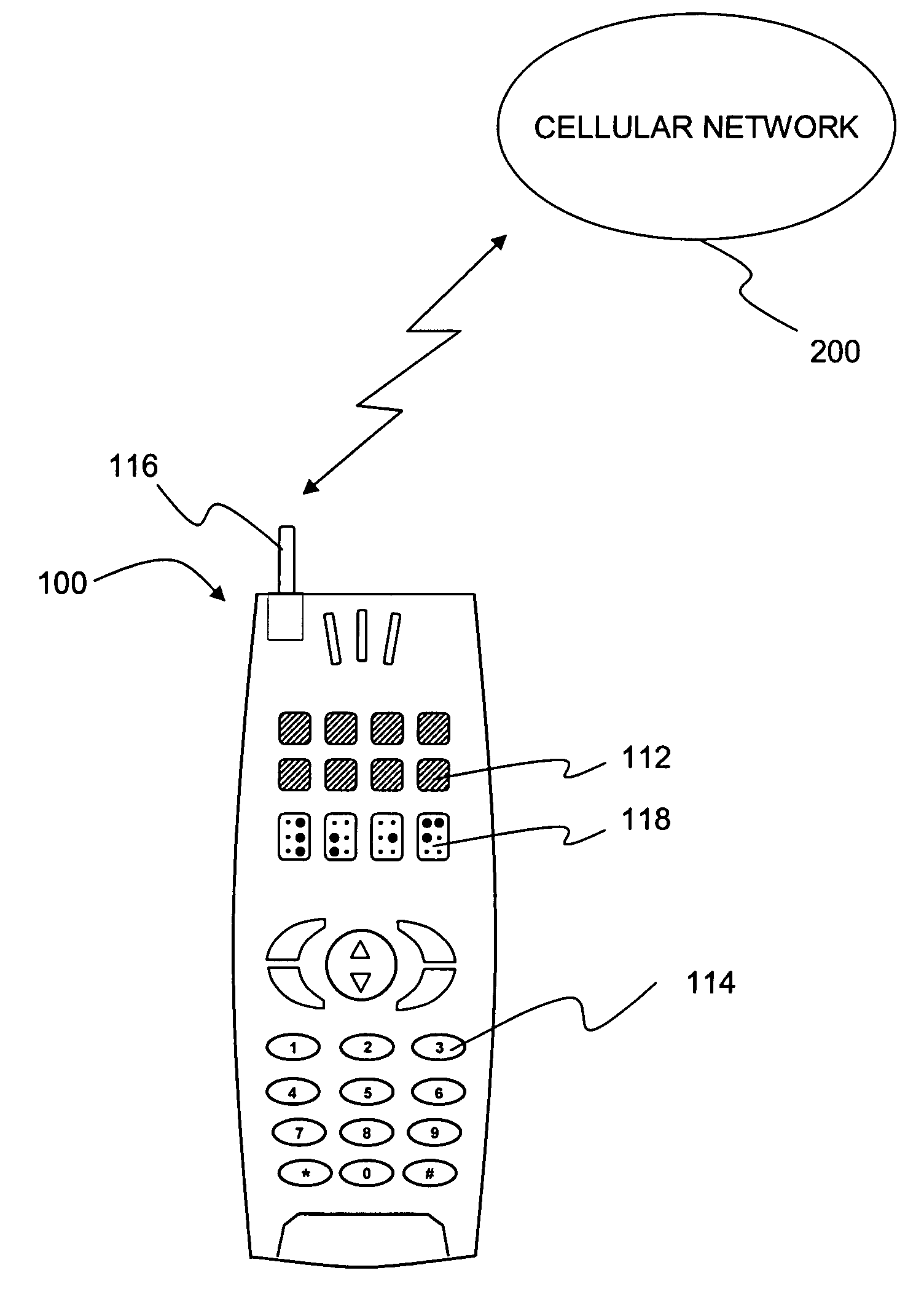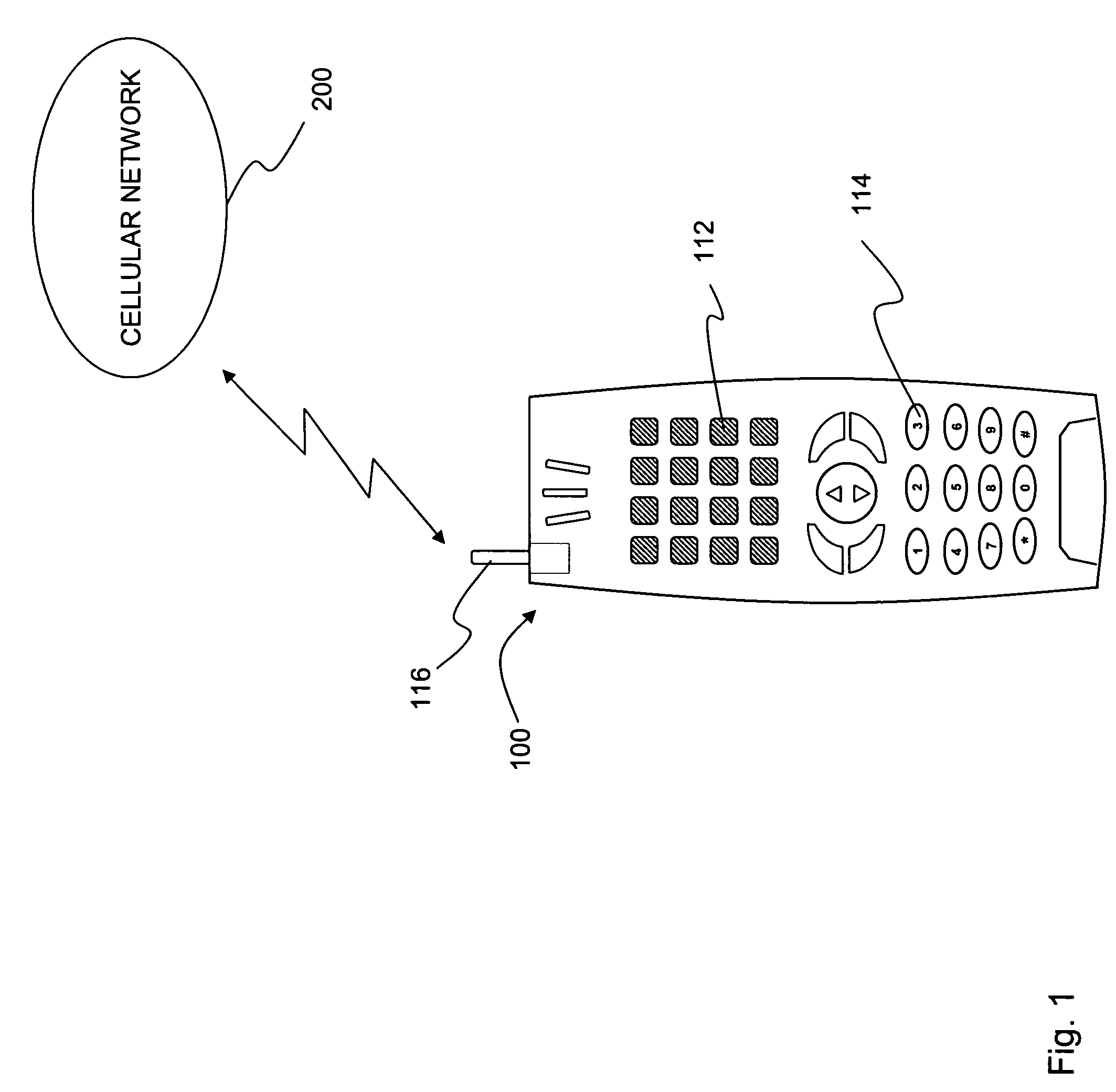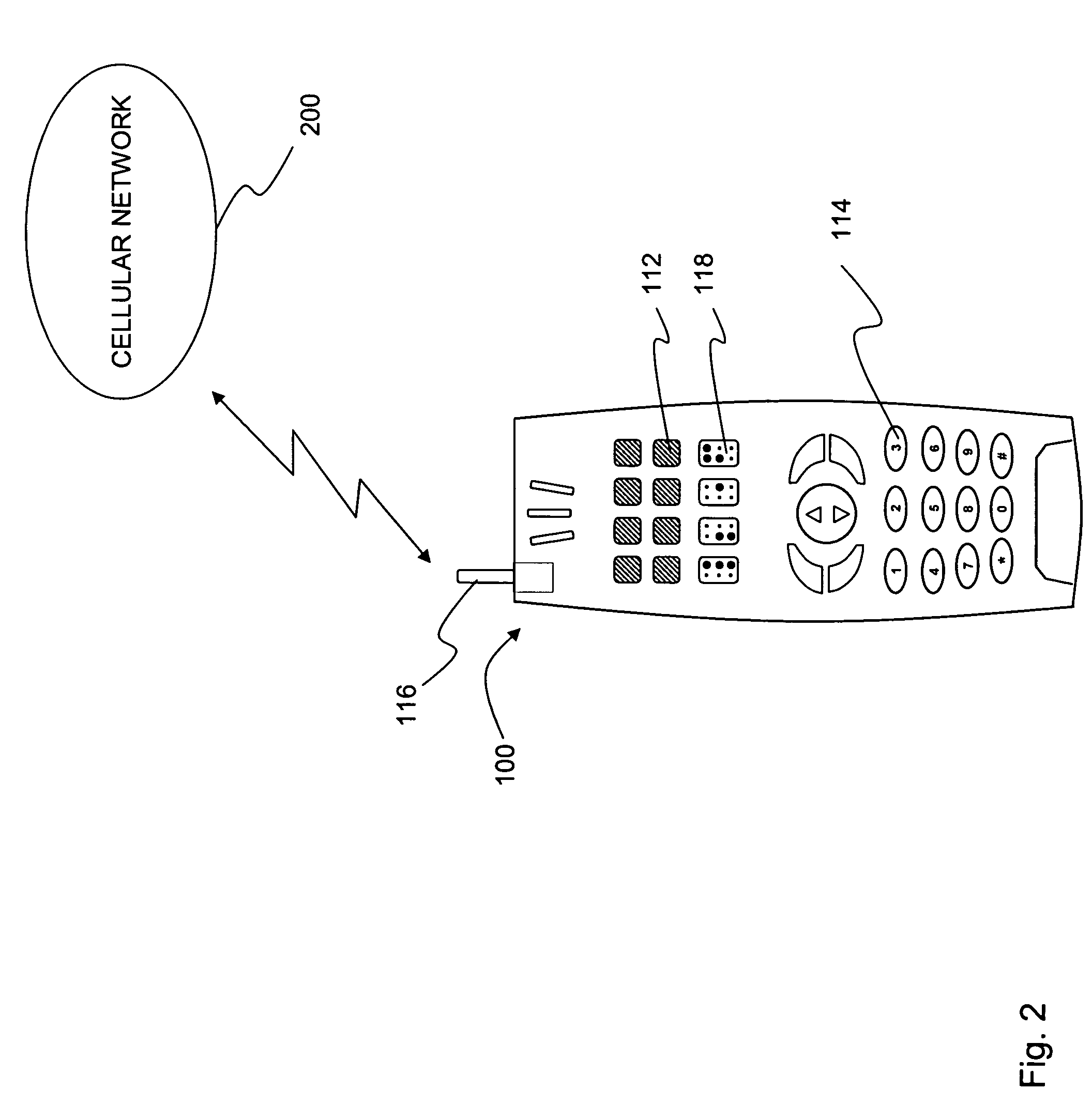System and method for providing access to SMS messages for blind people and mobile communication device employing the same
a technology of short message system and mobile communication device, applied in the field of communication, can solve the problems of limited mobile communication for blind people, many people with sight problems are not able to understand information, and blind people still cannot be reached
- Summary
- Abstract
- Description
- Claims
- Application Information
AI Technical Summary
Problems solved by technology
Method used
Image
Examples
first embodiment
[0023] Referring initially to FIG. 1, illustrated is a highly schematic diagram of a mobile communication device 100 provided with conductive surfaces as tactile output device constructed according to the principles of the present invention. The mobile communication device 100 has an antenna 16 for connecting to a cellular network 200 by an integrated communication transceiver (to be shown in FIG. 3).
[0024] As tactile output device the mobile communication device 100 is provided with an array of conductive surfaces 112 by which electrical signals may be transmitted to a user. These electrical signals are for example formed by the mobile communication device 100 by converting the text of an SMS message into electrical signals. The signals for single characters are predefined (e.g., Braille), thereby enabling the user to recognize what letter is coming, so that blind people advantageously are enabled to read SMS messages.
[0025] For the purpose of key recognition by a blind user, keys...
second embodiment
[0026] Turning now to FIG. 2, illustrated is a highly schematic diagram of a mobile communication device 100 provided with conductive surfaces and Braille type tactile elements as tactile output device constructed according to the principles of the present invention. The mobile communication device 100 is similar to the one shown in FIG. 1. The mobile communication device 100 in this embodiment, though, is provided with a combination of two tactile output device, an array of conductive surfaces 112 for transmitting electrical signals to the user and a row of Braille elements 118, each including six tactile elements provided as retractable or extensible pins. Other suitable tactile output device may also be employed and is within the broad scope of the present invention. The combination of different tactile output device provides the blind user with an additional convenience allowing him to choose between the provided means depending for instance on personal preferences or desired ou...
PUM
 Login to View More
Login to View More Abstract
Description
Claims
Application Information
 Login to View More
Login to View More - R&D
- Intellectual Property
- Life Sciences
- Materials
- Tech Scout
- Unparalleled Data Quality
- Higher Quality Content
- 60% Fewer Hallucinations
Browse by: Latest US Patents, China's latest patents, Technical Efficacy Thesaurus, Application Domain, Technology Topic, Popular Technical Reports.
© 2025 PatSnap. All rights reserved.Legal|Privacy policy|Modern Slavery Act Transparency Statement|Sitemap|About US| Contact US: help@patsnap.com



